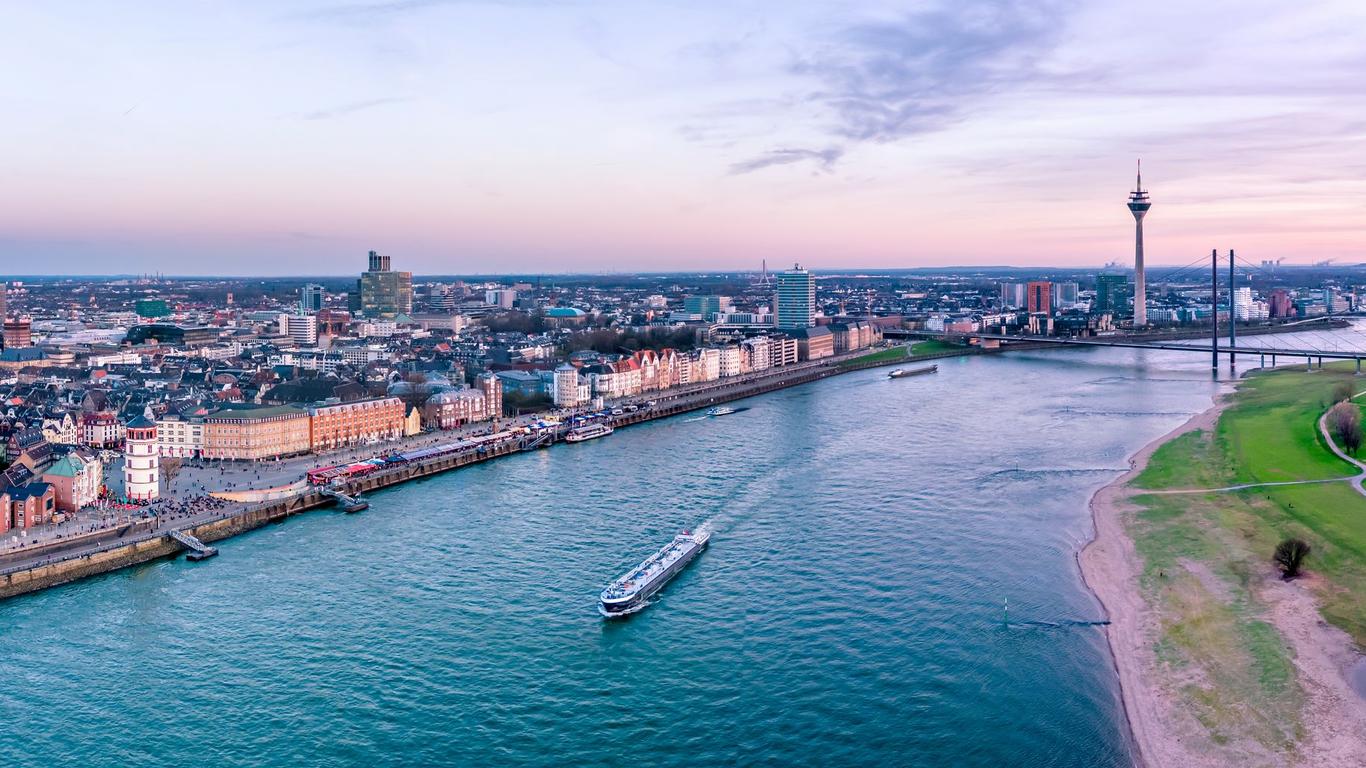Located around seven kilometres to the north of Düsseldorf's city centre, the Düsseldorf International Airport services the German state of North Rhine-Westphalia. It is the third largest airport in the country, set across three passenger terminals and two runways, and is a major hub for Air Berlin and Eurowings.
Düsseldorf International Airport’s three terminals are connected along a central spine, with the capacity to handle around 22 million passengers per year. Terminal A is used by Lufthansa, Germanwings and its international airline partners, with Lufthansa lounges. Terminal B is largely used for domestic and EU-bound flights, with an observation deck for watching the planes come and go, as well as airline lounges for Air France and British Airways. Terminal C is used exclusively for non-Schengen destination flights, including long-haul services with Emirates, Etihad, Delta and Turkish Airlines. There are numerous eateries, duty-free, boutique shops and currency exchange facilities scattered throughout all three main terminals, while Jet Aviation operates a small terminal exclusively for private and charter flights. The airport was extensively damaged by a fire in 1996 but has been completely refurbished into one of Germany’s most modern and comfortable facilities. Düsseldorf International Airport also operates “AIRxperience” airport tours, taking guests on a 90-minute exploration of all the behind-the-scenes workings of the airport, together with admission to the airport sightseeing deck.
Düsseldorf International Airport has two railway stations, one connecting to the city’s suburban railway and another for regional and long-distance train services.It is located 2.5 kilometres from the terminal buildings and connected by the SkyTrain monorail system. There are also numerous public bus services which connect the airport to Düsseldorf and its surrounds, or taxis are available outside all three terminals.
The Düsseldorf Airport was initially opened in 1927, with Deutsche LuftHansa operating services to major German cities and Geneva, before being transformed into a military airfield at the start of World War II. It reopened in 1948 under British administration, with the first flights operated by British European Airways.





